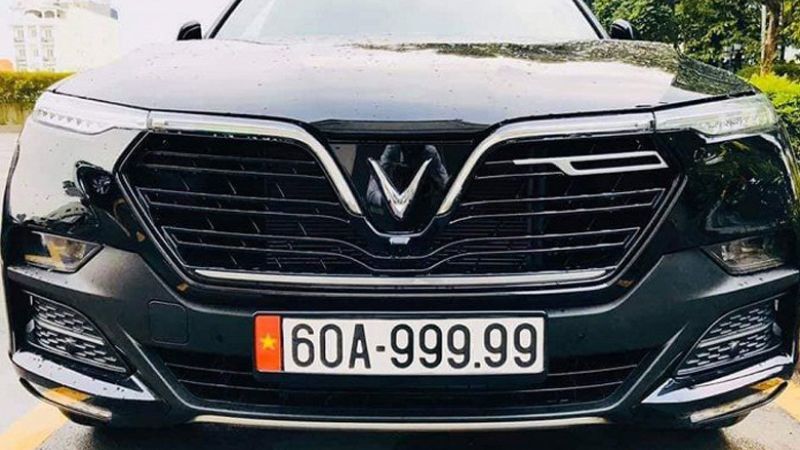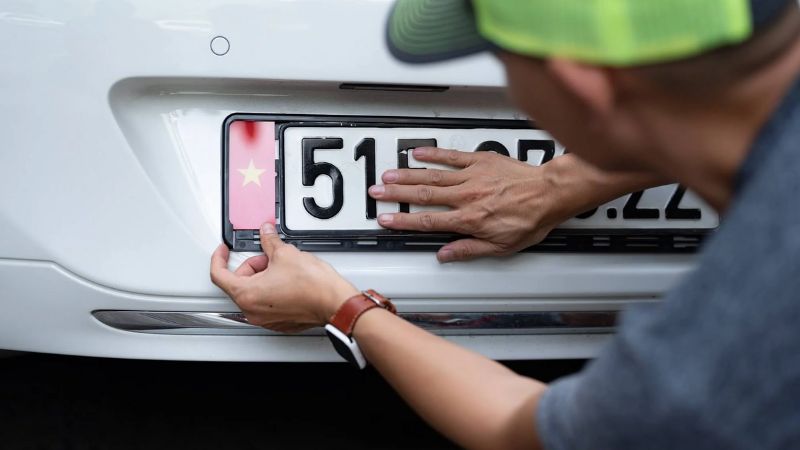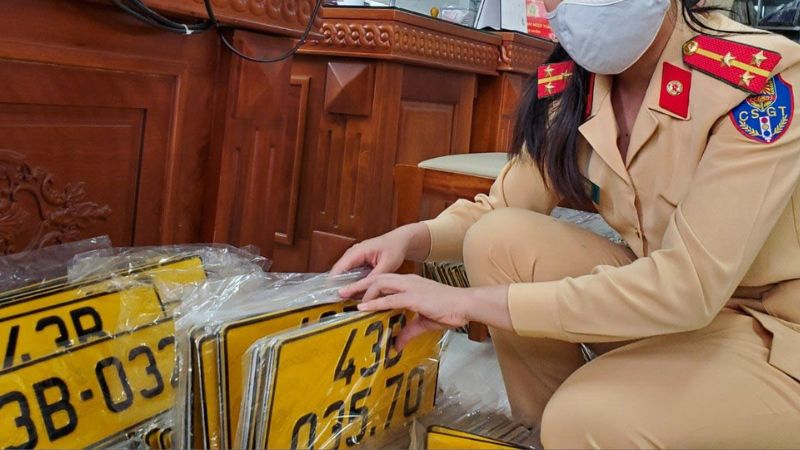While the concept of vehicle license plates is familiar to us, the Ministry of Public Security has recently issued Circular 24 of 2023, which introduces regulations on the issuance and retrieval of registration plates for motor vehicles, including the introduction of identifier plates. However, not everyone understands what identifier plates are and how they will be issued. Read on to find out more about this new development.
1 What are Identifier Plates?
Identifier plates are license plates that consist of colors, letter sizes, numbers, symbols, or a series of serial numbers assigned to vehicle owners and managed according to regulations (based on Clause 3, Article 3 of Circular 24 issued in 2023 by the Ministry of Public Security).
These identifier plates will be permanently assigned to the vehicle owner and cannot be changed to ensure accurate management and retrieval of owner and vehicle information from the system. Specifically, identifier plates will be managed as follows:
- For Vietnamese citizens: The license plate will be managed based on the identifier code of each individual.
- For foreign nationals: The license plate will be managed based on the identifier code of the foreigner, based on information from the identifier system or their residence/temporary residence card issued by the competent authority.
- For organizations: The license plate will be managed based on the organization’s electronic identifier code in the identifier system. If the organization does not have an electronic identifier code, it will be managed based on its tax code or establishment decision.
According to Clause 1, Article 39 of Circular 24 of 2023 by the Ministry of Public Security, vehicles registered with a 5-digit license plate before the owner’s name will be considered identifier plates by default. If the owner does not want to use the current license plate, they can apply for retrieval before the identifier plates come into effect on August 15, 2023.
 What are Identifier Plates?
What are Identifier Plates?
2 When will Identifier Plates be Implemented?
The regulations on identifier plates will officially come into effect and be implemented from August 15, 2023. Additionally, Circular 24, issued by the Ministry of Public Security on July 1, 2023, includes provisions regarding the issuance and retrieval of registration plates for motor vehicles.
This circular replaces Circular 58 of 2020, issued on June 16, 2020, by the Ministry of Public Security, which provided regulations on the issuance and retrieval of registration plates for road motor vehicles.
 When will Identifier Plates be Implemented?
When will Identifier Plates be Implemented?
3 How to Register for Identifier Plates
According to Circular 24 of 2023 by the Ministry of Public Security, individuals or organizations registering a new vehicle are required to obtain identifier plates. The registration process remains the same, and the competent authority will issue identifier plates upon receiving a valid application.
For vehicles registered with a 5-digit license plate before August 15, 2023, the current license plate will be considered the identifier plate by default if the owner does not apply for retrieval (as per Clause 1, Article 39 of Circular 24). When registering a vehicle, owners will be issued a new identifier plate or have their existing identifier plate reissued. This includes the following scenarios:
- Individuals or organizations will be issued a new identifier plate if they have not been assigned one before or if they already have an identifier plate but are registering a different vehicle.
- In the case of a retrieved license plate, the owner will be issued a new identifier plate according to regulations.
 How to Register for Identifier Plates
How to Register for Identifier Plates
4 Cases of Identifier Plate Retrieval
The Ministry of Public Security has outlined the following cases where identifier plates will be retrieved (based on Clause 7, Article 3 of Circular 24):
- The vehicle has reached the end of its service life.
- The vehicle is damaged and no longer safe to use.
- The vehicle ownership has been transferred.
Retrieved identifier plates can be reissued when the owner registers another vehicle under their ownership, provided they do not fall under the above cases. The letters and numbers on the identifier plate will be reserved for the owner for a maximum of 5 years from the date of retrieval. If the owner does not register another vehicle within this period, the identifier plate will be returned to the pool and assigned to another vehicle.
 Cases of Identifier Plate Retrieval
Cases of Identifier Plate Retrieval
5 Benefits of Identifier Plates
Identifier plates offer benefits not only for state management but also for vehicle owners.
For state management of license plates:
- They support the process of retrieving owner and vehicle information, enabling the police to easily verify matters related to traffic accidents and violations.
- They promote awareness and responsibility among vehicle owners when participating in traffic and ensure compliance with traffic safety regulations.
For vehicle owners:
- Owners can reuse their old license plate when registering a new vehicle (as per Clause 7, Article 3 of Circular 24).
- Individuals or organizations can retain their identifier plate when changing their residence or headquarters to a different province or centrally-run city (based on Clause 8, Article 3 and Clause 1, Article 16 of Circular 24).
- Owners of vehicles with 3-digit or 4-digit license plates can choose to switch to identifier plates if they wish (as per Clause 4, Article 39 of Circular 24).
- There is no limit to the number of vehicles an owner with an identifier plate can possess. Any additional vehicles registered by the owner will share the same identifier plate.
 Benefits of Identifier Plates
Benefits of Identifier Plates
This concludes our detailed explanation of identifier plates and the registration process. We hope you found this information helpful.






























